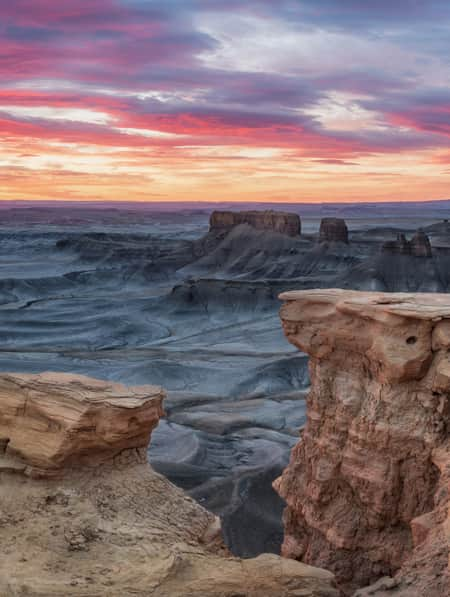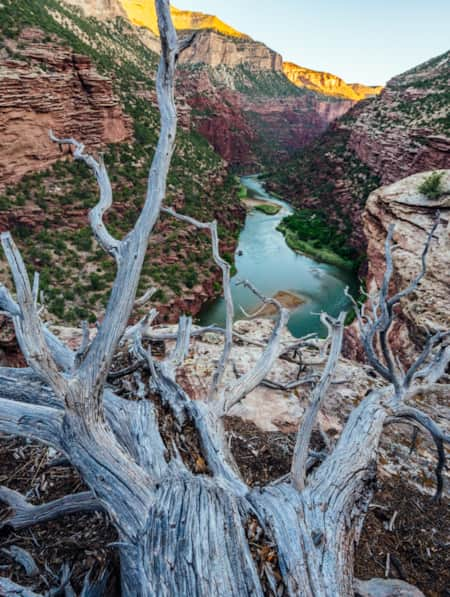Trekking Along the Dinosaur Diamond Highway
Utah’s Dinosaur Diamond Highway is the perfect guide to experience ancient history, millions of years in the making. Along the way of your seven-day trip, veer off the highway and discover the state’s magical, lesser-known landscapes and adventures.
Start and finish: Salt Lake City
Last destination: Moab area
The grandeur of this eastern Utah trek along part of the Dinosaur Diamond Prehistoric Highway is almost unbelievable. The full Dinosaur Diamond route is a national scenic byway that spans over 512 miles across Utah and Colorado. From the monolithic formations rising from the earth’s surface to the deeply cut canyons, you are guaranteed to experience both wonder and contentment. This family-friendly trip begins in Salt Lake City, with a prehistoric primer at the Natural History Museum of Utah and ends in Moab, one of the nation’s most famous adventure-laden towns.
On this seven-day itinerary, you’ll explore the copper and crimson landscapes and slickrock of Flaming Gorge National Recreation Area and Red Fleet State Park, both of which have beautiful reservoirs and the nearby Green River for fishing, boating, rafting and swimming. Midway through the week, the 150-square-mile San Rafael Swell provides visitors with sights seen nowhere else in the world and includes Jurassic National Monument (aka Cleveland-Lloyd Dinosaur Quarry), an internationally known active dinosaur dig site.
Round out your trip with two or more days in Moab, where you can hunt for real dinosaur tracks or get up-close and personal with more than 100 reconstructions of life-size dinosaur species at the Moab Giants Dinosaur Park and Museum. While in Moab, you have the choice to mountain bike the hundreds of trails, float the copper-tinged Colorado River, hike in the shadows of majestic rock formations or camp high above along the canyon. Just be sure to save time to explore the wondrous Arches and Canyonlands national parks and snag your very own postcard-worthy photo.
Looking for more dinosaurs? Read: The Ultimate Guide to Dinosaur Discovery While on a Trip to Utah
More information at dinosaurdiamondbyway.com

Salt Lake City to Flaming Gorge
250 Miles
A trip to the Natural History Museum of Utah in Salt Lake City is the ultimate primer for a dinosaur trek through the state’s geographically diverse countryside. If you have time to spare, pop next door to the adjacent Red Butte Garden, the Intermountain West’s largest botanical garden and part of the University of Utah campus.
Leave city life behind as you head east on Interstate 80 toward Flaming Gorge National Recreation Area. The reservoir at Flaming Gorge is a mecca for anglers of all skill levels, while also drawing water-sport enthusiasts from around the globe. On dry land, take in the visitors center before heading out on the easy Canyon Rim Hike to get a million-dollar view rich with crimson rock walls and sun-sparkling water below. Flaming Gorge is open year-round, but late spring to early fall is the best time to visit.
Pro Tip: Explore the Flaming Gorge-Uintas National Scenic Byway for a spectacular jaunt through one of the richest areas for wildlife and fossils in the West. The route is between Manila and Vernal on U.S. Highway 191 and state Route 44.
Overnight: Campgrounds for tents and RV’ing are available in Flaming Gorge and numerous national forests along U.S. 191. Lodging is available at Red Canyon Lodge, the town of Manila and in Vernal.
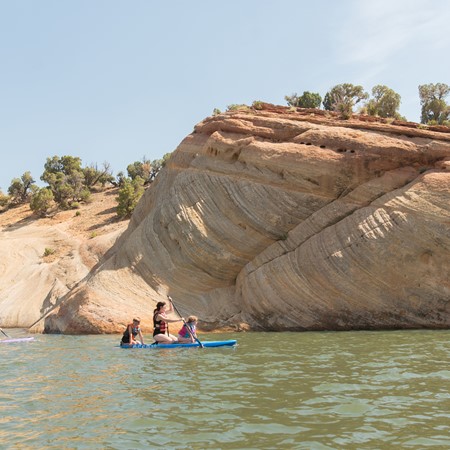
Red Fleet State Park and Green River
90 Miles
Red Fleet State Park is an all-encompassing destination of its own. Located on the southern slopes of the Uinta Mountains surrounded by sandstone, slickrock and a reservoir, it’s known as Northern Utah’s “Little Lake Powell.” Red Fleet is a well-maintained campground and day-use area open in all seasons. Bike trails for intermediate to advanced wind through the area. A paved boat launch, courtesy dock and swimming platform near a sandy beach beckons serious water enthusiasts and families alike.
The highlight of Red Fleet is the Dinosaur Trackway (Read: Hiking the Trackway), a 1.5-mile trek along a moderately rugged trail. At the end, you’ll have to work just a little to find the tracks of the 200-million-year-old Dilophosaurus, which reside in the slickrock shores of the reservoir.
Pro Tip: While in the area, consider a single-day or multi-day float trip on the Green River. One popular stretch leads you through Dinosaur National Monument from the Canyon of Lodore to Split Mountain Gorge.
Overnight: Use Red Fleet as a basecamp for two nights at campsites for tents and RVs. Or try nearby Steinaker State Park. Numerous lodging options are available in Vernal.
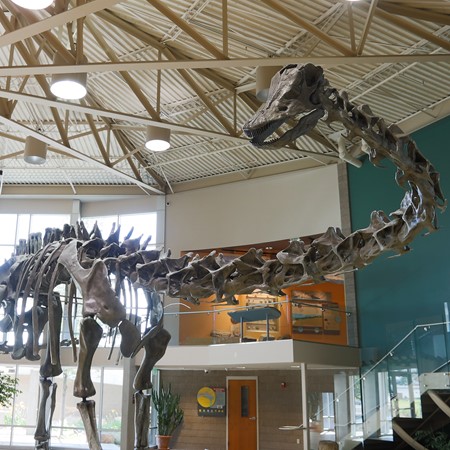
Dinosaurland is calling
25 Miles
Where dinosaurs once roamed the land 150 million years ago, now so do humans. Three geologic areas make up what is considered Dinosaurland: the Uinta Mountains, the Uinta Basin and the East Tavaputs Plateau. The heart of this region is Vernal, a bustling yet quaint town offering a multitude of outdoor adventures, as well as lodging, restaurants and cafes. Just 20 miles east of Vernal is the vast and impressive Dinosaur National Monument, which is home to the largest-known quarry of prehistoric Jurassic dinosaur bones, first unearthed in Utah in 1909. Nearby Steinaker State Park is home to the Vernal Beach and miles of sandy beaches and blue water that’s great for swimming, boating, fishing and basking in the sun.
Pro Tip: Off the beaten path and a short drive from Vernal is the McConkie Ranch Petroglyphs, a Utah Historic Site combining ancient Fremont Culture rock art and a privately owned visitor center.
Overnight: Continue camping at Red Fleet or Steinaker state parks or find numerous options for lodging in Vernal.
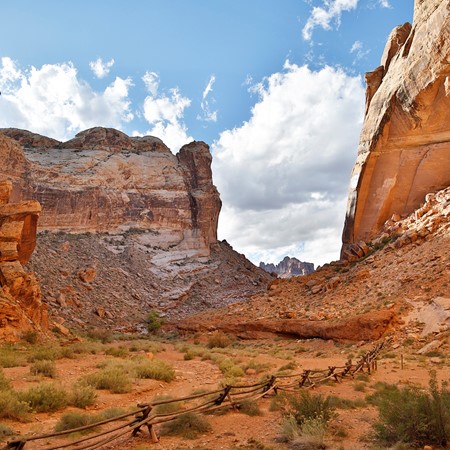
Introduction to the San Rafael Swell
150 Miles
Millions of years ago the earth’s interior pushed forth to the surface an unimaginably huge dome of rock that over eons eroded to create a natural urban-like city of buttes, canyons, mesas and summits. This spectacular geography is the relatively unknown San Rafael Swell and is 50 miles long and 30 miles wide.
A stop at the Museum of San Rafael Swell in Castle Dale offers the chance to explore the story of this geologic phenomenon, displays of dinosaur reconstructions and hundreds of ancient artifacts. Not to be missed is a tour of the family-friendly Cleveland-Lloyd Dinosaur Quarry (Read: Hidden Secrets of Cleveland Lloyd), recently designated Jurassic National Monument, an internationally-known active dig site. And if you need even more dinosaur discovery, make time for the Utah State University Prehistoric Museum in Price where Jurassic Park director Steven Spielberg was inspired by the “Utahraptor” - better known in the film as the “Velociraptor”.
Pro Tip: Be sure to check weather conditions as Bureau of Land Management unpaved roads to the Jurassic National Monument may become impassable after a storm. For even more dinosaur fun, stop in Price on the way to Jurassic National Monument to visit the USU Prehistoric Museum.
Overnight: Camping in tents and RVs is available in the nearby state parks of Green River, Huntington, Millsite and Goblin Valley. Lodging opportunities also can be found through B&Bs, Airbnb, and hotels in Helper and Price.
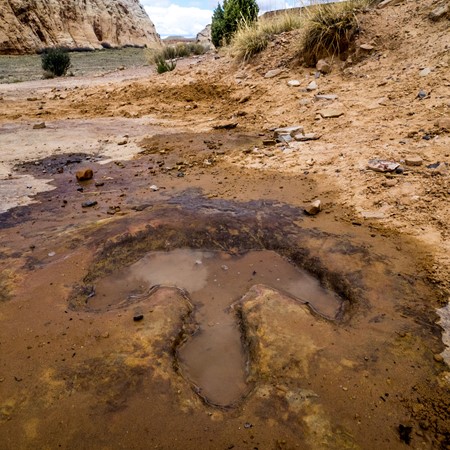
San Rafael Swell in Detail
40 Miles
If you’re looking for remote, wide open spaces that feel secluded and are exceptionally serene, take a drive deeper into the more than 600,000 acres of the San Rafael Swell. Mountain biking, backpacking and hiking are breathtaking in the northern part of the Swell, especially at the Wedge Overlook, which gives you a bird’s eye view of the “Little Grand Canyon.”
To get your dinosaur fix in San Rafael, snag a visitor’s guide in Castle Dale on your way in and use it to find dino footprints from millions of year ago when this area was lush with tropical vegetation.
Pro Tip: San Rafael is isolated, for the exception of the lone paved road in the Swell — Interstate 70. Come prepared with plenty of water and fill up your gas tank. The remaining roads are gravel and can sometimes be difficult to travel on after a storm.
Overnight: Backpacking is an option in the BLM land of the Swell. Overnight lodging can be found in nearby Green River or Moab.
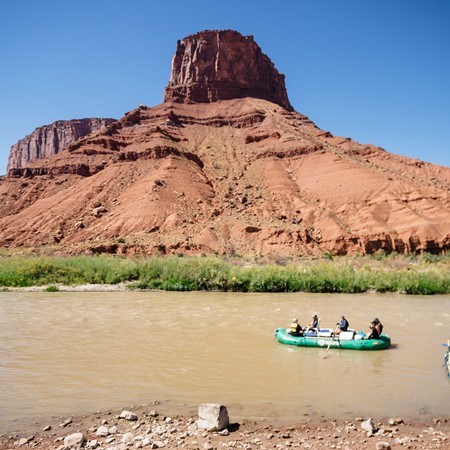
Moab by Road, River or Trail
150 Miles
Moab is a mecca for the adventure-minded and is worth two or more days of exploration among the buckled and artistically eroded red and copper sandstone. Greenery snakes through the rock landscape along the banks of the Colorado River, offering a cool and relaxing respite for both wildlife and people. The town’s easy-going downtown is full of quaint shops, cozy hotels and one-of-a-kind eateries.
Start your morning with either a guided, 13-mile raft trip down the Colorado River or set out for a half-day hike on the twisting trail beneath the famous Fisher Towers — rock formations that jet up from the earth, sculpted by millions of years-worth of sun, wind and rain. To round out the day, feed your mind and imagination with a visit to the Moab Giants Dinosaur Park Museum, which includes an interactive paleo exhibit.
Pro Tip: The best time to visit Moab if camping is in the spring and fall, as temperatures are perfect for nighttime stargazing and daytime fun. But many also visit in the summer; just plan your outdoor activities for earlier in the morning and bring plenty of water for hikes, river floating and mountain biking.
Overnight: Hundreds of camping and RV options are available throughout the Moab area, including Dead Horse State Park and in-town campgrounds. Hotels and other lodging options can be found throughout the town.
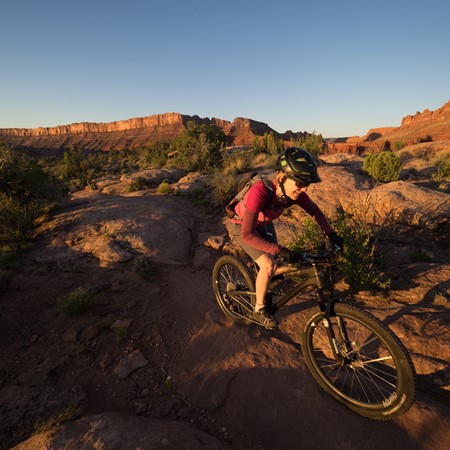
Moab biking and national parks
275 Miles
Moab is a basecamp for visiting two of the nation’s most spectacular national parks: Arches and Canyonlands, both of which are considered natural wonders and worthy of day-long trips that may coax you into extending your stay another day or two. Equally thrilling is Dead Horse Point State Park, a scenic, 40-minute drive with 2,000-foot-high views down to the Colorado River that rival the highest scenes of the Grand Canyon.
Moab also is known worldwide for its thousands of miles of mountain biking trails, which accommodate the beginner to the advanced. A number of outfitters and guiding services are on hand to help you take advantage of the slickrock to the single-track.
Pro Tip: Complete your trip with one or two easy hikes to see the dinosaur tracks of the Allosaurus, Apatosaurus or Diplodocus. These can be found on the Dinosaur Tracks Trail above the Colorado River and the Copper Ridge Dinosaur Trackways.
Overnight: If staying longer, camping and RV options are available throughout the Moab area, including Dead Horse State Park and in-town campgrounds. Hotels and other lodging options can be found in-town. Otherwise, it's about four and a half hours back to Salt Lake City.














